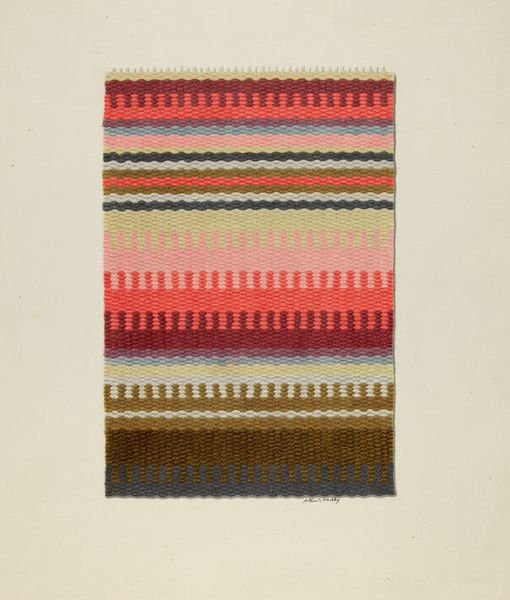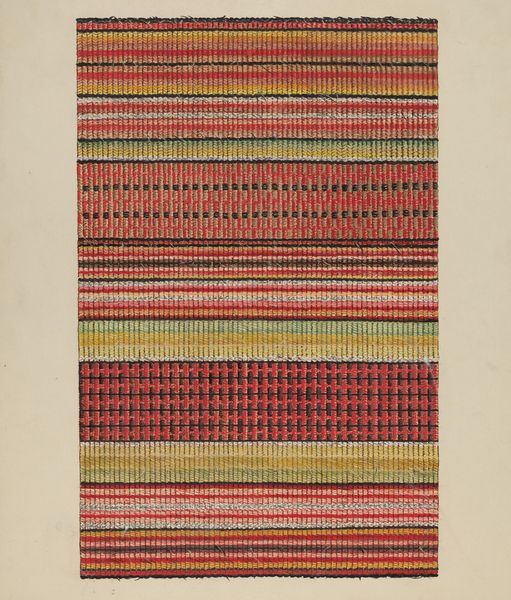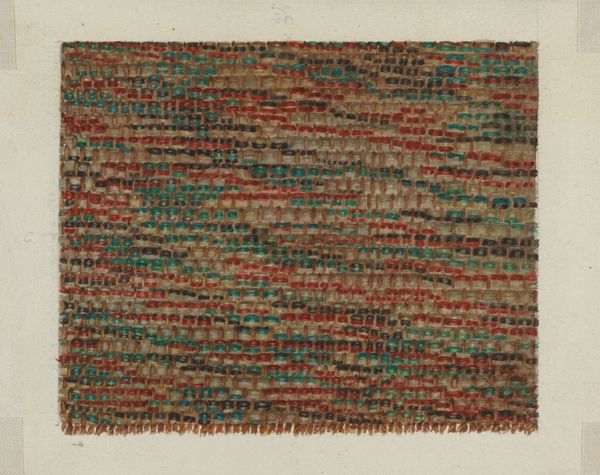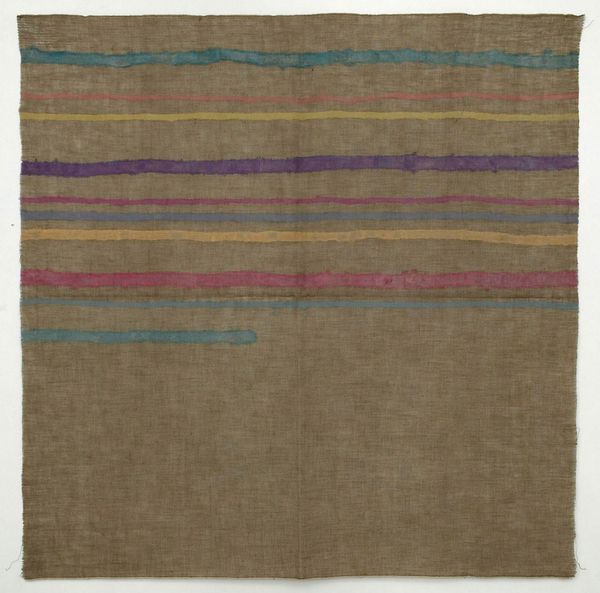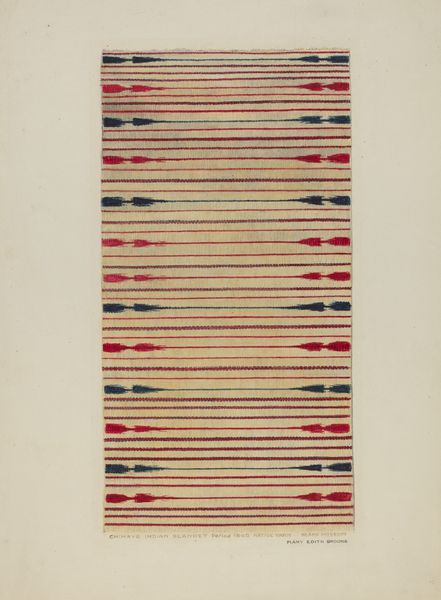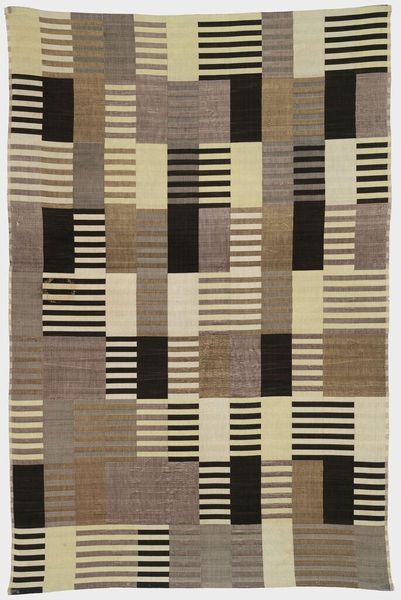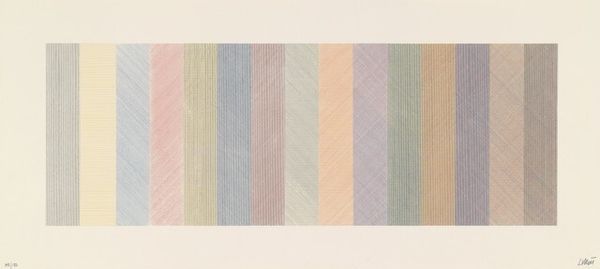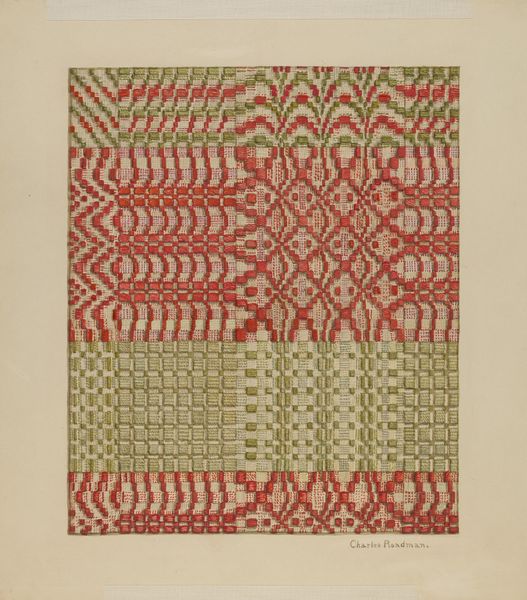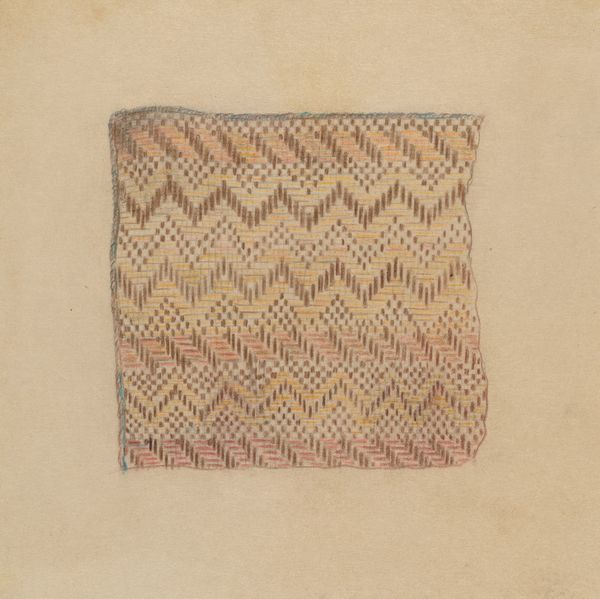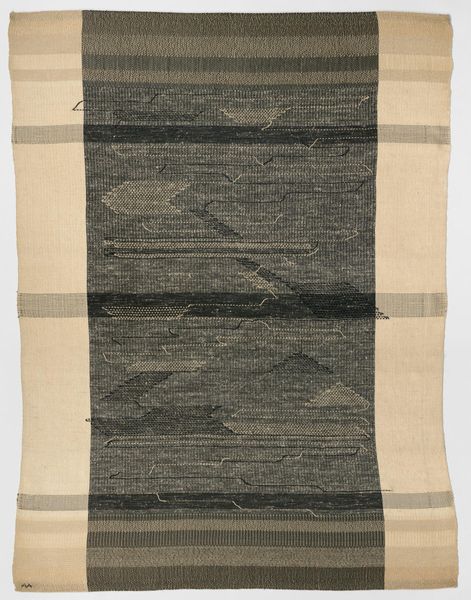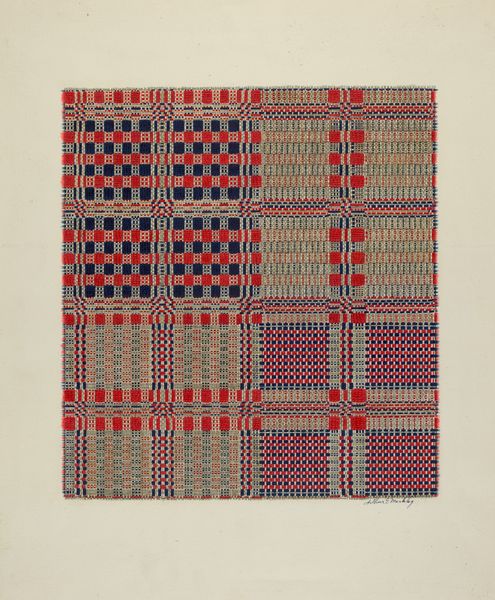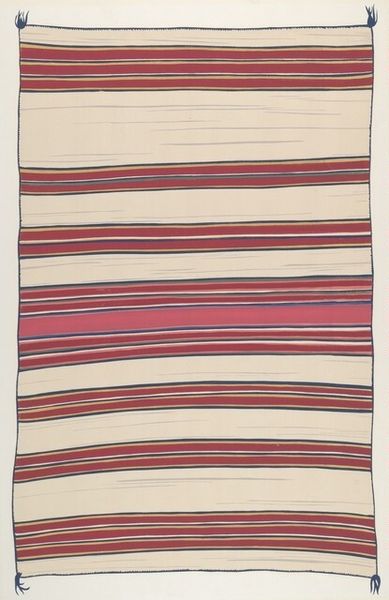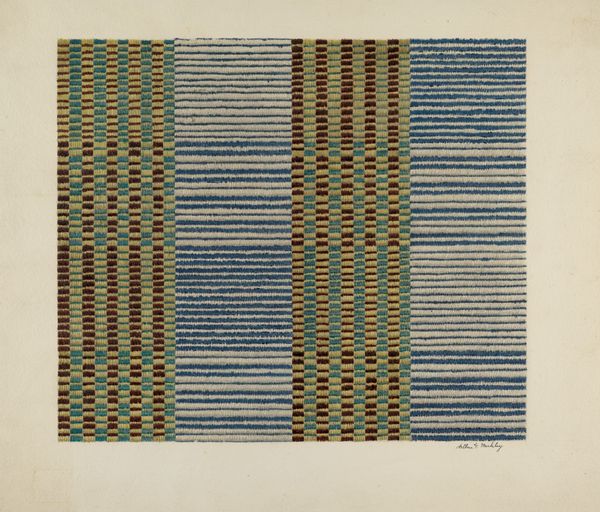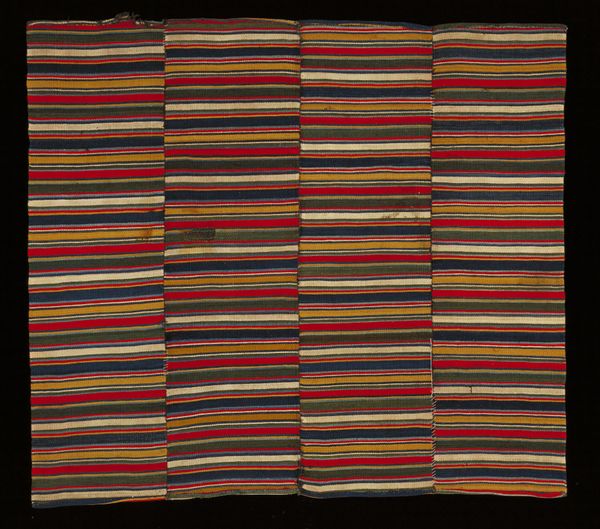
fibre-art, weaving, textile
#
fibre-art
#
weaving
#
textile
#
geometric
Dimensions: overall: 46 x 38.3 cm (18 1/8 x 15 1/16 in.) Original IAD Object: 36" wide
Copyright: National Gallery of Art: CC0 1.0
Editor: Here we have Jules Lefevere's "Handwoven Carpet," created around 1936. It’s a fascinating textile piece featuring these really intriguing geometric patterns. I'm immediately drawn to how grounded and earthy the color palette feels. How do you interpret this work? Curator: It strikes me as a powerful example of how the Pattern and Decoration movement sought to disrupt established hierarchies within the art world. Lefevere elevates what was once considered 'craft' to the level of fine art, challenging the dominant, often masculinist, narratives of Modernism. How does viewing this as Modernist weaving shift your understanding of Modernism itself? Editor: I guess it shows how varied Modernism actually was? So how does its creation during the interwar period speak to this specific moment in time? Curator: Exactly. In the 1930s, the world was grappling with economic depression and looming political instability. Textile production, often associated with women's labor and domesticity, becomes a subtle form of resistance. By embracing pattern and color, Lefevere reclaims agency and challenges the austere, often cold aesthetic of mainstream modernism. This isn't just a carpet; it's a quiet assertion of cultural identity. The work creates its own value system, offering warmth and comfort during difficult times. Editor: So it’s more than just a carpet design. It tells a broader story about social values, resistance, and identity through its colors and materials. Thanks for that insight! Curator: Precisely. And thinking about the materials used – weaving is inherently about interconnectedness, layering different strands to create a unified whole. I feel this approach invites us to question our own assumptions and consider art's potential as a catalyst for societal change. Editor: This was enlightening. I'll never look at a carpet the same way again. Curator: I hope you see it now as a soft form of activism, weaving together aesthetics and social commentary!
Comments
No comments
Be the first to comment and join the conversation on the ultimate creative platform.
